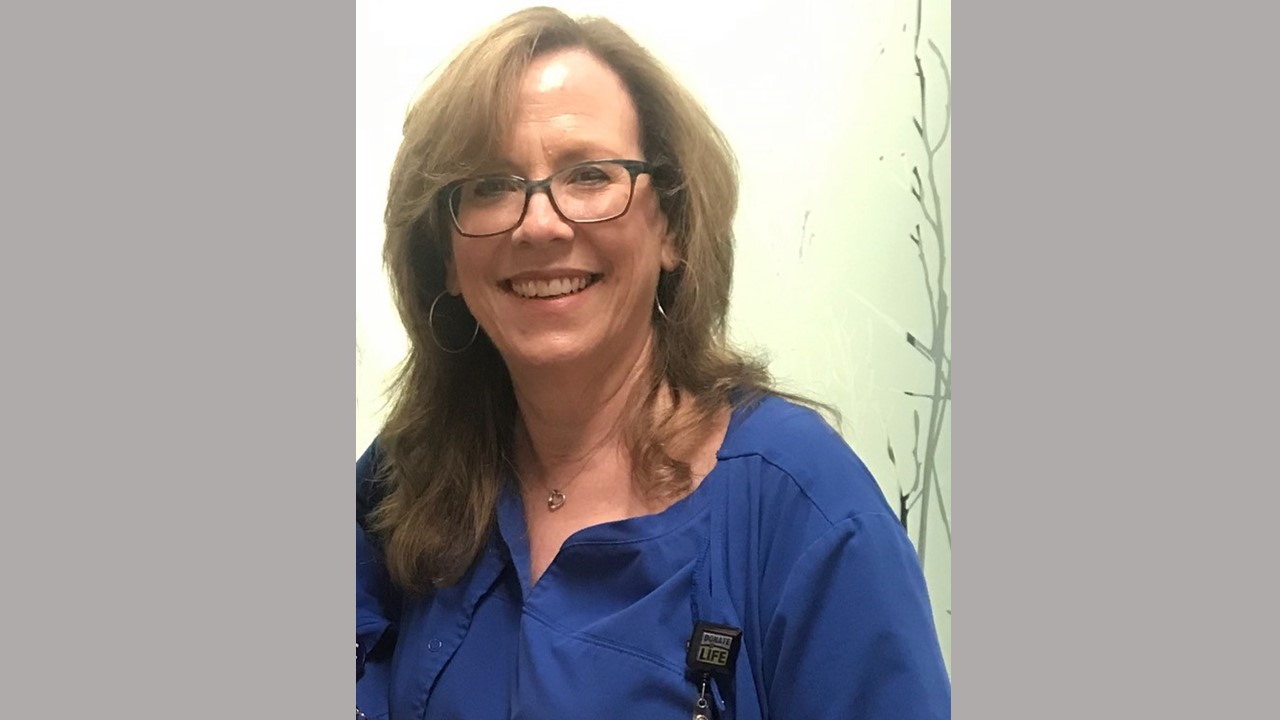
Telemedicine at Johns Hopkins Medicine enabled Sharon Graves to have her stroke diagnosed and a treatment plan set up without ever stepping foot in a hospital. Credit: Photo Courtesy of Sharon Graves
A patient believed to have suffered a stroke typically gets transported to the nearest emergency room for tests to determine the best course of action. Telemedicine at Johns Hopkins Medicine enabled one patient to have her stroke diagnosed and a treatment plan set up without ever stepping foot in a hospital.
"I've never seen this level of care coordination happen in primary care before," says Judy Greengold, a nurse practitioner with Johns Hopkins Community Physicians in Fulton, Maryland, who quarterbacked the effort within a 24-hour span in late summer 2021.
Sharon Graves scheduled a telehealth appointment with Greengold, her longtime practitioner, a day after twice feeling tingling in her arm and numbness in her mouth. Graves, a nurse for almost 40 years, first experienced the symptoms in the morning getting ready to go to her job as director of a hospital intensive care unit. She took her own blood pressure ("a little high but not anything outrageous"), sat down for a few minutes as the feelings dissipated, then went to work, chalking up the incident to stress.
The rest of the day was stressful, Graves admits, and she did not eat or drink as much as she should have. That afternoon, the symptoms reappeared a "little bit stronger for a little bit longer," she says. Graves laid down when she got to her Howard County home and felt better after dinner, but decided to talk to Greengold the next day.
Greengold told Graves her symptoms could be more than stress.
"'She's like, 'What does your gut tell you?'" Graves says. "And I said, 'Honestly, I don't think I'm the best person to ask because being a nurse, you think the worst thing and then you tend to rationalize it and dismiss it."
"I explained my concerns," Greengold says, "that Sharon may have had a stroke and that if we missed or delayed the diagnosis or treatment, we risked her having another, bigger neurological event that could permanently compromise her mobility or vision or another cognitive process. She didn't want to go to the hospital, but was willing to work with me to start the prevention measures and evaluate this comprehensively."
Their call was at 2 p.m. Greengold wanted Graves to get a brain scan as soon as possible, and just four hours later, Graves was getting scanned at a Johns Hopkins imaging center in Bethesda, Maryland. At 9 a.m. the next day, Greengold asked Graves to join her on another video call and confirmed the diagnosis.
"I couldn't believe I had a stroke," says Graves.
Greengold ordered lab work and her staff helped coordinate visits for Graves to specialists. By mid-morning, Graves was evaluated by a neurologist in Ellicott City. By early afternoon, she had seen a cardiologist in Columbia, both offices close to her home.
"Judy said, 'You had everything done within 24 hours, which is probably quicker than could have happened at a hospital, especially right now [during the COVID-19 pandemic]," Graves says. "It's quite amazing."
Graves continued to receive outpatient management of her condition, and Greengold continued to follow up virtually with Graves.
"I felt very important and well cared for by [Greengold] and her team," she says. "They were so good about following up with me and just getting me into all of these tests and seeing these different doctors; I just really couldn't say enough."
Graves adds she has had no problems using technology for telemedicine, and would recommend it for other patients.
"If you have a patient who is really engaged and can really describe what's going on with them, I think it can be very effective," she says.
Johns Hopkins Medicine has conducted more than 1.2 million telemedicine visits for patients across the nation since the pandemic began. One-fifth of the telemedicine visits in 2021 were for "telemedicine sensitive" ambulatory care, like Graves' visit with Greengold. And telemedicine visits accounted for between 17% and 30% of all patient appointments per quarter at Johns Hopkins Community Physicians in the first three quarters of 2020.
"The key to every diagnosis is strong communication and partnership with the patient. In telemedicine especially, it's critical to be transparent with patients about the limitations of what we can and can't see and to develop a clear plan of evaluation and treatment together," says Greengold. "Telemedicine has enabled me to cultivate communication skills that deepen relationships with patients in my care and enhance my diagnostic process."
Graves spent September at home recuperating before going back to work part-time in October and full-time in November.
"I'm not some really superstitious or religious person, but I sort of think somebody was up there looking out for me," she says.






